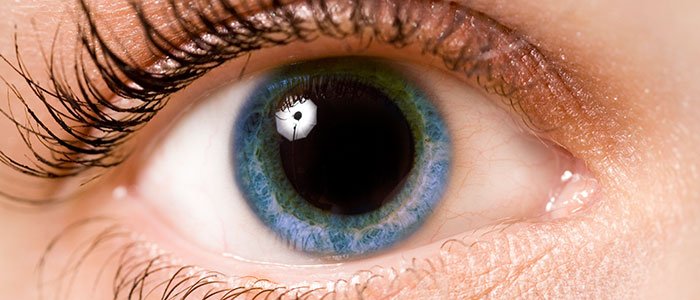How Long Do Pupils Remain Dilated After an Eye Exam?

Dilating the pupils of the eyes helps an ophthalmologist view the internal structures, including the lens, optic nerve, blood vessels, and retina. Dilation involves the use of special eye drops that either stimulate contraction of the muscles surrounding the pupil or relaxes the muscles so that they open. Dilation is a key component of a comprehensive eye exam, allowing doctors to identify and diagnose eye problems that they may otherwise not see.
Understanding the Pupil
The pupil is similar to a camera aperture in that it becomes bigger or smaller, depending on how much light is needed. To do this, the pupil will undergo miosis, in which the constriction of the pupil causes it to close, or mydriasis, in which the dilation of the pupil allows it to open. The pupil size can change for many reasons. It could adjust in response to the amount of light it is exposed to. It can also change when a person becomes excited such as in moments of physical stress, emotional stress, or exposure to painful stimuli.
Common Duration of Pupil Dilation
Dilating the eyes is a central part of an eye exam. It involves the administration of two or three drops directly into the eye. Depending on what the doctor is trying to achieve and how large the pupil needs to be, different types of eye drops may be used, including:
- Phenylephrine
- Tropicamide
- Hydroxyamphetamine
- Cyclopentolate
- Atropine
Eye drops are placed in both eyes so that the retina, macula, and optic nerve can be examined closely using a handheld light and magnifying lens. While the dilation itself is not painful, it can be incredibly uncomfortable as the eye has no means by which to protect itself from light.
The time eyes remain dilated varies according to the type of drops used, as well as the color of your eyes. By and large, dark-colored eyes have shorter dilation periods, typically for two to four hours, while light-colored eyes may stay open for up to eight hours.
Children, meanwhile, are often dilated with stronger drops to improve the accuracy of the exam. It is not uncommon for some kids to wake up the morning after an exam with their pupils still wide open.
In the past, a medication called Rev-Eyes (dapiprozole) was used to reverse dilation. It is now off the market. When it was available, typically it would take one to two hours for the medication to have an effect. There were other side effects with the medication, and given the cost and side effect profile, these drops are no longer administered.
Coping With Dilation
For most people, the side effects of dilation are bothersome but not intolerable. To deal with blurred vision and sensitivity to light, disposable sunglasses are usually provided to help reduce short-term discomfort. Unlike regular sunglasses, these block off peripheral light from the side of the lenses as well as the front.
Contact SightMD today to schedule an appointment with one of our doctors to discuss your vision health at one of our convenient locations!


